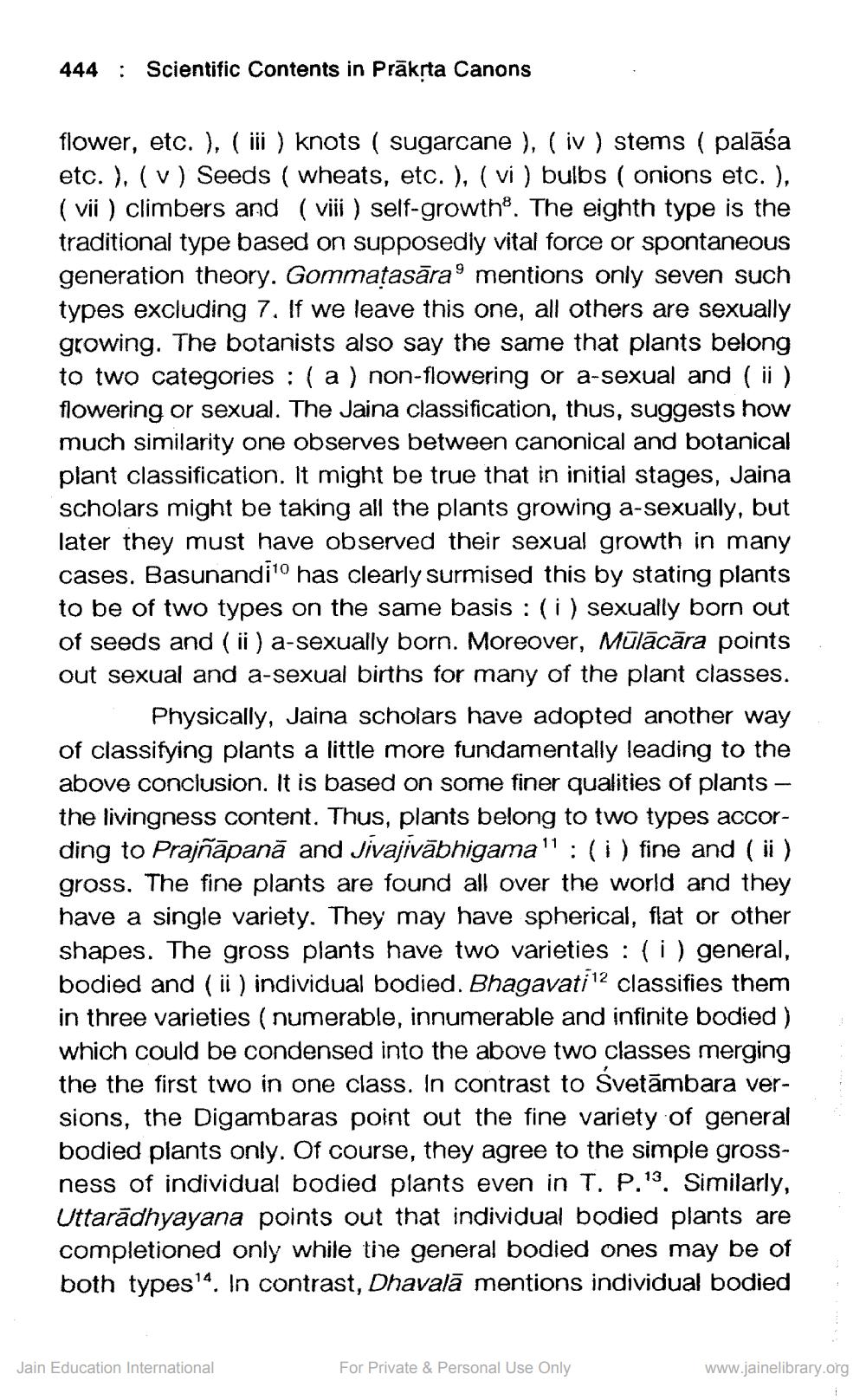________________
444 : Scientific Contents in Prākṛta Canons
flower, etc.), (iii) knots (sugarcane), (iv) stems ( palāśa etc.), (v) Seeds (wheats, etc. ), (vi) bulbs (onions etc. ), (vii) climbers and (viii) self-growth. The eighth type is the traditional type based on supposedly vital force or spontaneous generation theory. Gommaṭasāra mentions only seven such types excluding 7. If we leave this one, all others are sexually growing. The botanists also say the same that plants belong to two categories: (a) non-flowering or a-sexual and (ii) flowering or sexual. The Jaina classification, thus, suggests how much similarity one observes between canonical and botanical plant classification. It might be true that in initial stages, Jaina scholars might be taking all the plants growing a-sexually, but later they must have observed their sexual growth in many cases. Basunandi1o has clearly surmised this by stating plants to be of two types on the same basis: (i) sexually born out of seeds and (ii) a-sexually born. Moreover, Mūlācāra points out sexual and a-sexual births for many of the plant classes. Physically, Jaina scholars have adopted another way of classifying plants a little more fundamentally leading to the above conclusion. It is based on some finer qualities of plants - the livingness content. Thus, plants belong to two types according to Prajñāpanā and Jivajivābhigama11: (i) fine and (ii) gross. The fine plants are found all over the world and they have a single variety. They may have spherical, flat or other shapes. The gross plants have two varieties: (i) general, bodied and (ii) individual bodied. Bhagavati12 classifies them in three varieties (numerable, innumerable and infinite bodied) which could be condensed into the above two classes merging the the first two in one class. In contrast to Svetambara versions, the Digambaras point out the fine variety of general bodied plants only. Of course, they agree to the simple grossness of individual bodied plants even in T. P.13. Similarly, Uttaradhyayana points out that individual bodied plants are completioned only while the general bodied ones may be of both types14. In contrast, Dhavala mentions individual bodied
Jain Education International
For Private & Personal Use Only
www.jainelibrary.org




